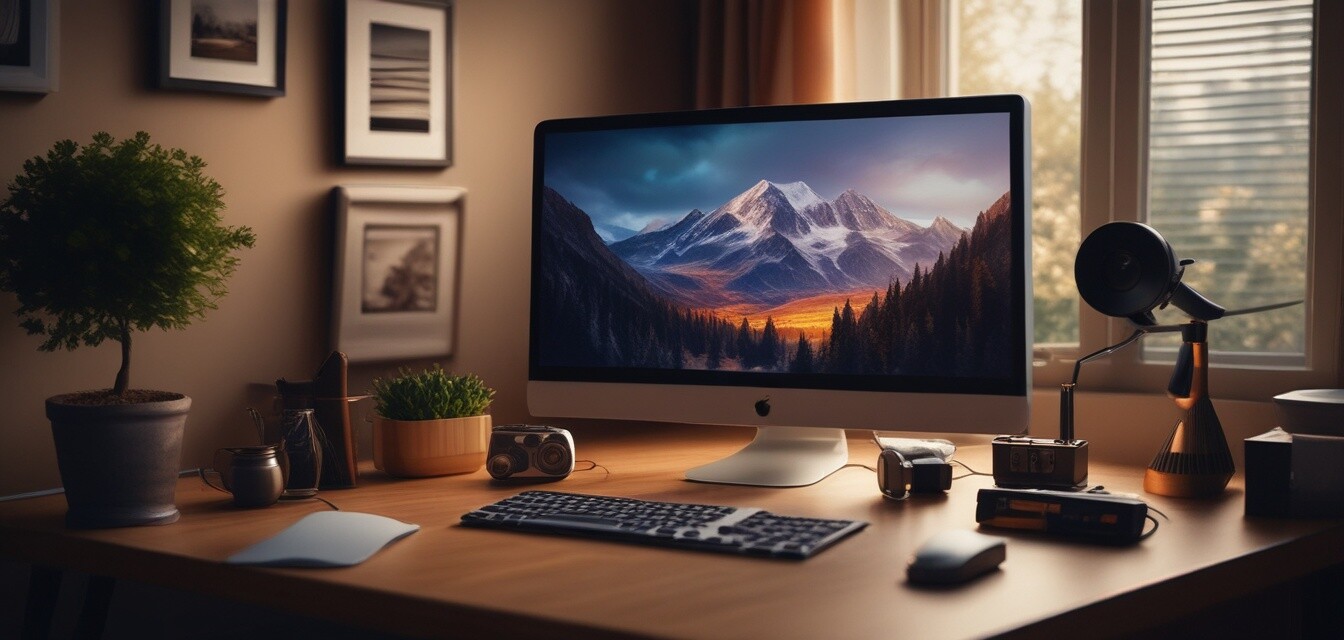
Perfecting Your Lighting for Streaming with a Webcam
Key Takeaways
- Good lighting is crucial for high-quality streaming webcam videos.
- Understanding natural and artificial lighting can elevate your video quality.
- Proper lighting setup enhances facial features and minimizes shadows.
- Experimenting with angles and light sources gives the best results.
- Investing in affordable lighting solutions can greatly improve your streaming setup.
When it comes to streaming or video conferencing, many often overlook one of the most critical elements: lighting. Proper lighting not only enhances the quality of your webcam feed but also creates a professional appearance. In this guide, we’ll explore tips on how to leverage both natural and artificial lighting to maximize your webcam experience.
The Importance of Lighting in Webcam Streaming
Lighting can make or break your streaming experience. Here are some factors that highlight its significance:
- Improved visibility: Clear video quality ensures that your audience sees you well.
- Professional look: Good lighting gives your videos a polished and professional appearance.
- Mood setting: Lighting can set the tone for your stream, affecting viewer engagement.
Understanding Natural Light
Natural light can provide the best quality for your webcam videos. Here are some tips on how to utilize it:
Where to Position Yourself
Identifying the right spot in your home can make a significant difference:
- Face a window: Position yourself so that the light from the window illuminates your face directly.
- Avoid backlighting: Ensure that bright lights or windows are not behind you, as they can create silhouettes.
- Experiment with timings: Different times of the day can yield varying lighting scenarios. Find what works for you.
Types of Natural Light
| Type of Natural Light | Best Use |
|---|---|
| Morning light | Soft and warm light, ideal for creating a welcoming atmosphere. |
| Noon light | Bright but harsh, best used with diffusing techniques. |
| Golden hour light | Creates beautiful, soft shadows—perfect for an aesthetic look. |
Utilizing Artificial Lighting
When natural light isn’t available, or you prefer consistency, artificial lighting becomes essential. Here’s how to choose and set it up:
Types of Artificial Light
- Softboxes: These provide even, diffused lighting ideal for video streaming.
- Ring lights: Create a flattering, even light that reduces shadows and highlights the eyes.
- LED panels: Versatile lights that can be adjusted in brightness and color temperature.
Lighting Setup Tips
Here are steps to set up your artificial lighting effectively:
- Place your light source at eye level for the best illumination.
- Use two light sources: one for key lighting (main light) and another for fill light (to soften shadows).
- Adjust the color temperature of your lights for a natural look—aim for a daylight-balanced light around 5600K.
Combining Natural and Artificial Lighting
For the best results, you can combine both types of lighting:
- Use natural light as the main source and supplement it with artificial lighting on cloudy days.
- Position your artificial lights in a way to mimic the direction and quality of natural light.
Common Lighting Mistakes to Avoid
As you refine your lighting setup, keep an eye out for these frequent pitfalls:
- Poor placement: Ensure lights are directed towards you, not above or below.
- Overexposure: Balance brightness to avoid washed-out facial features.
- Inconsistent lighting: If possible, stick to the same lighting setups for every stream for consistency.
Key Lighting Gear
Even on a budget, there are excellent lighting options available to enhance your streaming:
| Lighting Type | Approximate Cost | Best For |
|---|---|---|
| Softbox Kit | $50 - $100 | Professional streaming setups |
| Portable Ring Light | $30 - $70 | On-the-go streaming |
| LED Panel Lights | $60 - $150 | Versatile lighting for various setups |
Pros
- Enhances video quality significantly.
- Creates a professional appearance.
- Allows for greater viewer engagement and focus.
Cons
- May require initial investment for quality equipment.
- Finding the right setup can take time and experimentation.
Conclusion
Perfecting your lighting for streaming is crucial to delivering quality content that resonates with your audience. By investing time in understanding both natural and artificial lighting, you can create a professional presence on camera. Whether you’re streaming for work or play, the right lighting will ensure that you shine bright. For more webcam tips, check out our other resources in our Webcam Usage Tips category.